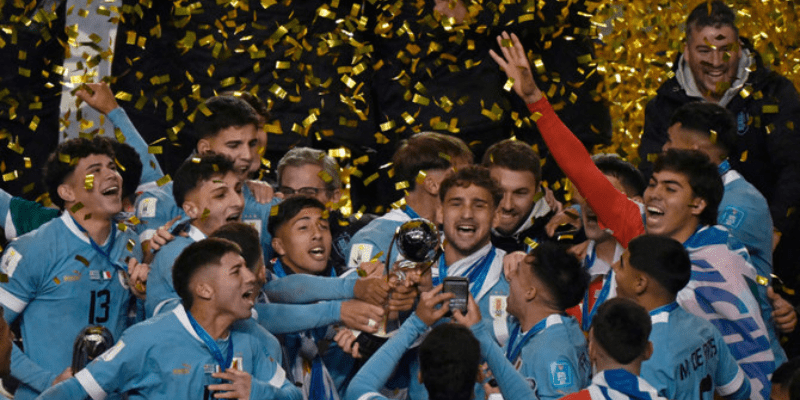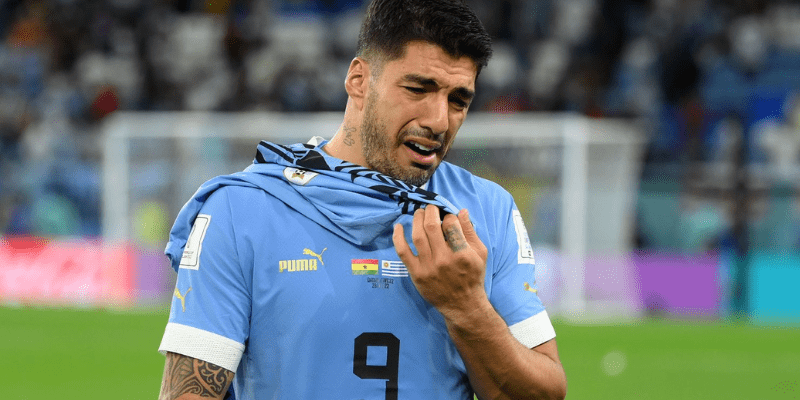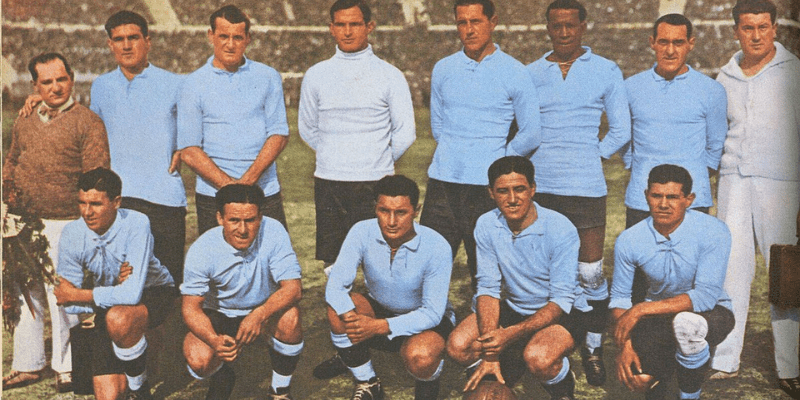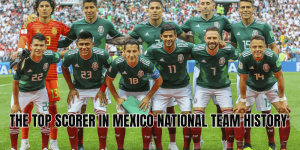From the dusty streets of Montevideo to the electric roar of Maracanã, Uruguay’s World Cup journey is a dramatic saga of grit, glory, and unforgettable moments. Uruguay’s best performance at the World Cup is not a single moment—it is a dual tale of triumph, resilience, and national myth. In this article, KorKick will take you through how La Celeste claimed football’s greatest prize, what followed in later tournaments, and why 1930 and 1950 remain Uruguay’s pinnacles on the world stage.
Early dominance and the birth of the World Cup

Long before the first FIFA World Cup, Uruguay had already stamped its authority on international football. The nation won gold football tournaments in the 1924 and 1928 Olympics, boasting teams that dazzled Europe with skill and cohesion. These victories gave Uruguay legitimacy as a global football power.
When FIFA announced the inaugural World Cup in 1930, Uruguay argued its case with pride: as reigning Olympic champions and celebrating its centenary of independence, it would host the new tournament. FIFA agreed, granting the small nation dramatic control of football’s fate.
Uruguay’s early dominance built a foundation for greatness. Their style was combative and inventive, their players fearless—even small in population, their ambition towered.
Two peaks: Uruguay wins in 1930 and 1950
The Home Triumph of 1930
The first time Uruguay’s best performance at the World Cup manifested was right at its birth. As host nation, Uruguay navigated group play, a semifinal crushing of Yugoslavia (6–1), and an emotional final showdown against archrivals Argentina. After trailing 2–1 at halfe, La Celeste erupted in the second half, winning 4–2 and securing Uruguay’s first world title.
Alberto Suppici, just 31 years old, became the youngest coach ever to win the World Cup—a record that still stands. The victory was more than a trophy: the following day Uruguay declared a national holiday. The world watched, and Uruguay’s name was etched in football legend.
The Maracanazo of 1950
Uruguay’s second summit came in 1950—and it may be their most astounding achievement. In a unique format, the champion was decided by a final round-robin among Brazil, Spain, Sweden, and Uruguay. The decisive match came when Uruguay faced Brazil at the Maracanã in Rio, in front of an estimated 173,850 spectators. Brazil only needed a draw to take the title—but Uruguay delivered a shock. After conceding first, Juan Alberto Schiaffino equalized, and Alcides Ghiggia struck the winner with 11 minutes to go. Uruguay won 2–1 and, in doing so, secured their second World Cup.
The moment became legend: the Maracanazo is one of football’s most iconic upsets, a story of psychological warfare, belief, and national pride. While there was no formal final match, this clash essentially functioned as one—one that rewrote expectations forever.
How do we define “best performance”?

When fans ask Uruguay’s best performance at the World Cup, definitions can diverge. Let’s examine possible criteria and see how they stack up:
- Winning the tournament
- By this measure, Uruguay’s best performances were 1930 and 1950—undisputed triumphs.
- Dominance across matches / goal difference
- In 1930, Uruguay went 4–0 with 15 goals scored and 3 conceded. In 1950, they went unbeaten with a stellar attacking campaign.
- Context and magnitude
- The 1950 win over heavily favored Brazil in a hostile stadium adds emotional weight. The circumstances amplify the magnitude., Uruguay’s best performance is either 1930, 1950, or both—depending on whether you favor purity of form or the drama of the moment. In truth, Uruguay’s legacy rests on both peaks.
Post-1950: Pursuit without the crown
After 1950, Uruguay remained a force—but never reclaimed the summit. Their journey is a tapestry of close calls and romantic fights.
Semi-finals and fourth places
- 1954: Uruguay reached the semis but lost to Hungary, finishing fourth.
- 1970: Another fourth-place finish after battling to the semis.
- 2010: Uruguay stunned the world with an inspiring run to the semis, then lost the third-place match—but finished fourth.
These campaigns revived hopes—especially 2010, when stars like Diego Forlán carried Uruguay deep into Brazil’s tournament.
Other notable finishes
- 2018: Reached quarter-finals, finishing officially fifth.
- 1966 and 1986: Reached quarter-finals in varied campaigns.
Yet, none of these equaled the emotional gravity or sheer finality of those two championship runs.
The players and heroes behind Uruguay’s peaks

No triumph is won by faceless athletes. The two golden eras had legendary leaders.
1930 era leaders
- José Nasazzi: Captain and defensive bedrock, he embodied leadership and poise.
- Héctor Scarone, Pedro Cea, Héctor Castro: Forwards who combined poise and instinct to finish chances.
1950 legends
- Obdulio Varela: The “Negro Jefe,” his leadership in that hostile Maracanã cauldron defined the mental battle.
- Juan Alberto Schiaffino and Alcides Ghiggia: Those two haunted Brazil’s dreams with equalizer and winner.
These heroes carried more than a ball—they carried a nation’s pride.
Why 1930 and 1950 remain unassailable
- They are unique peaks: No other World Cup run has matched the blend of drama, legacy, and impact Uruguay generated.
- Population underdog impact: As one of the world’s smallest footballing nations, their double crown over giants adds mythical weight.
- Narrative power: The first World Cup, and the Maracanazo—these are stories that transcend generations.
In short, Uruguay’s best performance at the World Cup is a dual heritage: 1930 for legacy and form, 1950 for narrative and boldness.
Final Thoughts
Uruguay’s best performance at the World Cup is not confined to a single match—it’s the combination of two crowning moments. 1930 and 1950 stand as the twin pillars of Uruguay’s global legacy, symbolizing mastery, resilience, and belief against all odds.
If you love football history, keep exploring with KorKick—dive into players’ biographies, legendary matches, and statistical deep-dives across the globe. Don’t stop here: expand your knowledge, challenge your favorite narratives, and come back when curiosity strikes again.






